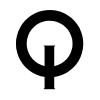Optimist (dinghy): Difference between revisions
JohnDowney (talk | contribs) No edit summary |
|||
| Line 33: | Line 33: | ||
Below is a leading Irish Optimist Sailor in action during the 2005 End of Season Championships. |
Below is a leading Irish Optimist Sailor in action during the 2005 End of Season Championships. |
||
[[Image:DadOppi.jpg]] |
|||
==Origin== |
==Origin== |
||
It was designed in [[1947]] by [[Clark Mills]]. The hull can essentially be characterized as a contoured box made of [[glass-reinforced plastic]] or [[plywood]]. The Optimist is sometimes mocked lightly as a "pram" or even derided as "a sailing bathtub". But although it breaks many of the principles of good boat design, it has surprisingly good handling characteristics. |
It was designed in [[1947]] by [[Clark Mills]]. The hull can essentially be characterized as a contoured box made of [[glass-reinforced plastic]] or [[plywood]]. The Optimist is sometimes mocked lightly as a "pram" or even derided as "a sailing bathtub". But although it breaks many of the principles of good boat design, it has surprisingly good handling characteristics. |
||
Revision as of 16:13, 20 January 2007
| Specifications Under Current Rules | ||||||||||||
|---|---|---|---|---|---|---|---|---|---|---|---|---|
 | ||||||||||||
|
The Optimist is a small, single-crew sailing dinghy. Mainly because of its economical simplicity and the practical size and weight restrictions it places on any skipper, it has become the most popular craft for introducing children to the sport of sailing. In some parts this boat is commonly called the "Opti" or "Oppy". Below is a leading Irish Optimist Sailor in action during the 2005 End of Season Championships.
Origin
It was designed in 1947 by Clark Mills. The hull can essentially be characterized as a contoured box made of glass-reinforced plastic or plywood. The Optimist is sometimes mocked lightly as a "pram" or even derided as "a sailing bathtub". But although it breaks many of the principles of good boat design, it has surprisingly good handling characteristics.
Description

Sail
The single sail of the Optimist is sprit-rigged. Two battens stiffen the roach. It is secured evenly with ties along the luff to the mast and along the foot to the boom, pulled down tightly by a vang. The light, slim third spar, the sprit, extends through a loop at the peak of the sail; the bottom rests in the eye of a short cable which hangs along the back edge of the mid-mast. Raising and lowering the sprit on these teeth or refastening the boom vang allow for adaptation of sail trim to a range of wind conditions.
Hull
Just in front of a bulkhead, which partitions the boat nearly in half, is the daggerboard. Right behind it on the centerline of the hull floor are attached a pulley and ratchet block. These anchor the sheet and its pulley on the boom directly above. At the bow resides a wooden thwart to support the mast which passes through a hole in its center.
As in some more elaborate types of dinghy, floats are installed inboard along each side in the front half of the boat to add buoyancy in the event of capsizing. Two straps run lengthwise along the floor from bulkhead to stern. These and a tiller extension allow a sailor to hang off the side for weight distribution--commonly called "hiking out". This can be crucial to maintaining the boat in near horizontal disposition during heavy air. A monograph-style "IO" insignia (after IODA) on the sail is common. Boats entering a regatta must also generally have an identifying number on the sail to facilitate scoring, dispute resolution and contestant interaction.
Introductory sailboat
Optimists are among the only boats well-suited for complete beginners to intermediate sailors between the ages of 8 and 15. Very small children are sometimes "doubled up" in Optimists but in general the boats should be regarded as single-handers - it is in this mode that children gain the most in terms of confidence and improved skills. Most sailing schools have a number of them and they are the first boat most beginners will sail.
First-timer classes offered teach the rudiments of sailing technique in a variety of conditions depending on regional weather patterns but many also offer immediate immersion into competition within the topography of a standard race course.
Optimists are also the main training ground for future Olympic sailors. Over 60% start in the boat and over 40% of them are already international competitors by the age of 13-15. By December of the year in which they turn 15, Optimist racers are said to "age out"; that is, they become too old to continue racing.
Racing
The Optimist is the biggest and most competitive youth racing class in the world. As well as the annual world championship the class also has six continental championships, attended by a total of over 700 sailors a year. Many thousands more take part in international and national regattas. Many of the top world Optimist sailors immediately become world-class Laser Radial or 4.7 sailors after they "age-out", and even average Optimist racers later do well in the "more advanced" classes including double-handers such as the 420 and 29er.
Optimists provide real international competition because they are manufactured to the same specification by dozens of builders.
The first World Championships were held in Great Britain in 1962, and they have since been arranged annually. For the first 20 years, the class was dominated by sailors from the Scandinavian countries, with 13 world champions. In the 1990s Argentina was by far the dominant country, and Argentina and Peru have ever since been the best team-racing countries in the world (the two together having won 12 team racing championships (IODA Challenge Cup) since 1990). Since the turn of the millennium there has been no single dominant country, with medallists from countries such as Trinidad, Bermuda and Malaysia.
Manufacture
Over 4,000 boats a year are produced by nearly 40 builders worldwide. A list of them is available at www.optiworld.org/ioda-builders.html
